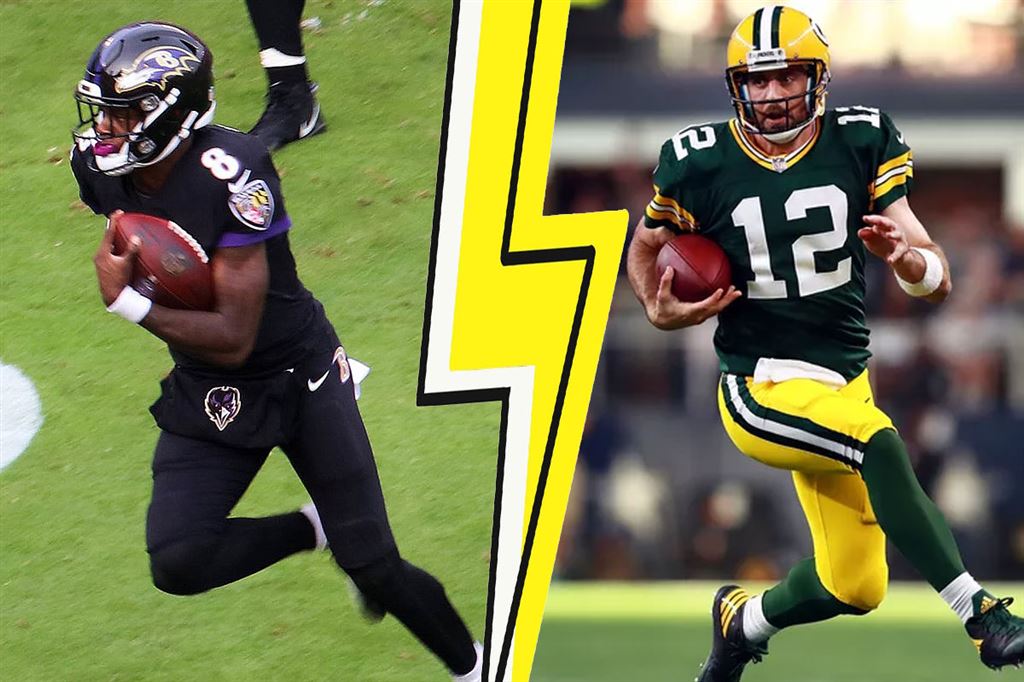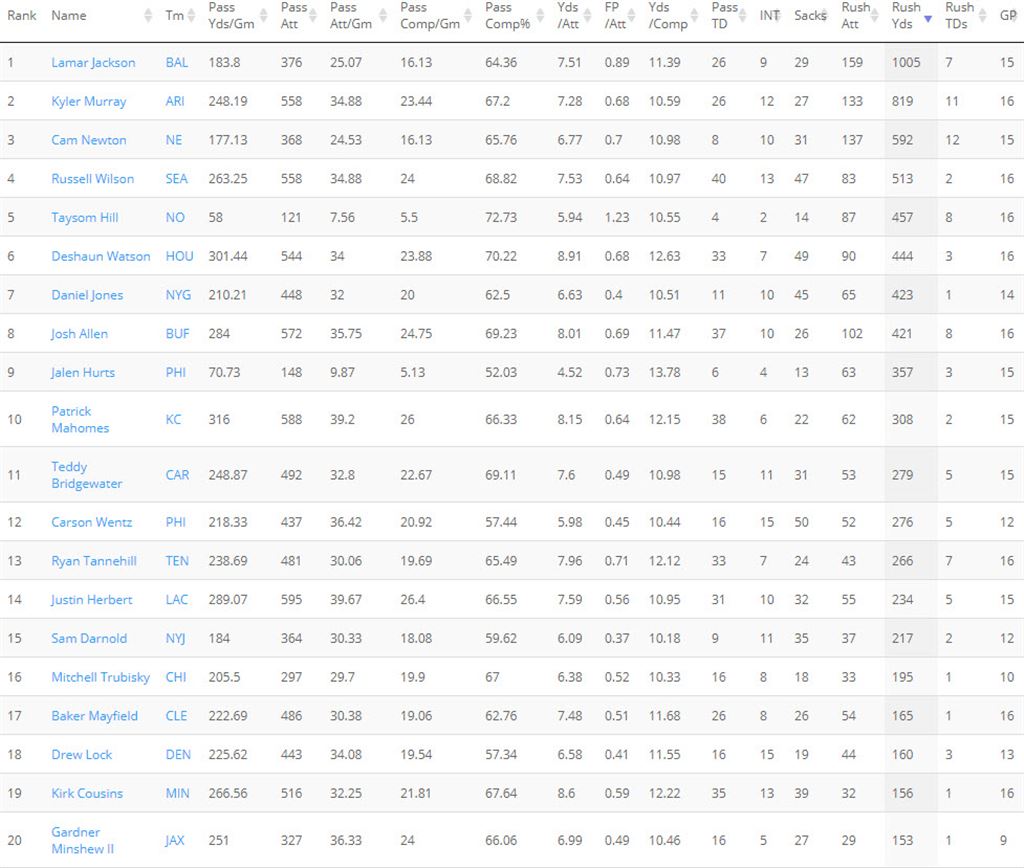Deep within the catacombs of sports forums and Facebook sports groups, you will find couch potatoes and amateur talking heads debating the merits of mobile quarterbacks versus traditional pocket passing quarterbacks. Invariably in those discussions, there will arise a secondary debate concerning the nuances between a mobile quarterback and a dual-threat quarterback. Is there a difference between a mobile quarterback and a dual-threat quarterback? The answer is yes, and here are the differences.

What is a Mobile QB?
A mobile quarterback, very simply, is any quarterback that can consistently avoid pressure and extend plays with his legs, typically with the goal of passing the ball. This attribute does not require the quarterback to run a 4.4, 40-yard dash. Nor does it require a quarterback to be able to “break off” a 60-yard run. It simply means that he is adept enough and athletic enough to avoid the rush and extend plays momentarily. This definition seems to suggest that 90%+ of the quarterbacks in the NFL are mobile. The degree of their mobility is often the sticking point of debates.
Players who would fall into the mobile-only quarterback category are Aaron Rodgers, Patrick Mahomes, Baker Mayfield, and Joe Burrow, to name a few.
I'm not saying that these players are not capable of breaking off a long run; I am simply saying that they primarily use their athleticism to extend plays to pass and not run. Additionally, offensive coordinators do not typically design running plays for these quarterbacks.
What is a Dual-Threat QB?
A dual-threat quarterback is a running quarterback. While a dual-threat quarterback is inherently mobile, his skillset takes mobility to another level. He is almost equally adept at running as he is passing. Remember, running and mobility are two different things. This quarterback type can run effectively (similar to a running back), and offensive coordinators will regularly design plays that utilized this specific trait of the quarterback. Additionally, defensive coordinators will game-plan against the quarterback’s running ability.
Quarterbacks who fall into this category are Cam Newton, Lamar Jackson, Josh Allen, and Kyler Murray, among others.
Where the Lines are Blurred Between the Two
Sometimes it's hard to determine into which category a quarterback falls. Keep in mind that there is an offensive scheme component to how a dual-threat quarterback is categorized. For instance, while Russell Wilson prefers to throw from the pocket, the Seahawks will design running plays to take advantage of his running ability. Many would classify him as a dual-threat because of Seattle’s scheme and Russell’s rushing numbers. However, it's debatable whether defensive coordinators plan for his running ability.
The point of all this is that there is a difference between a quarterback who is considered a dual-threat versus one who is only mobile. There is also debate as to which category certain quarterbacks fall.
 Rushing numbers for NFL quarterbacks in the 2020 season.
Rushing numbers for NFL quarterbacks in the 2020 season.